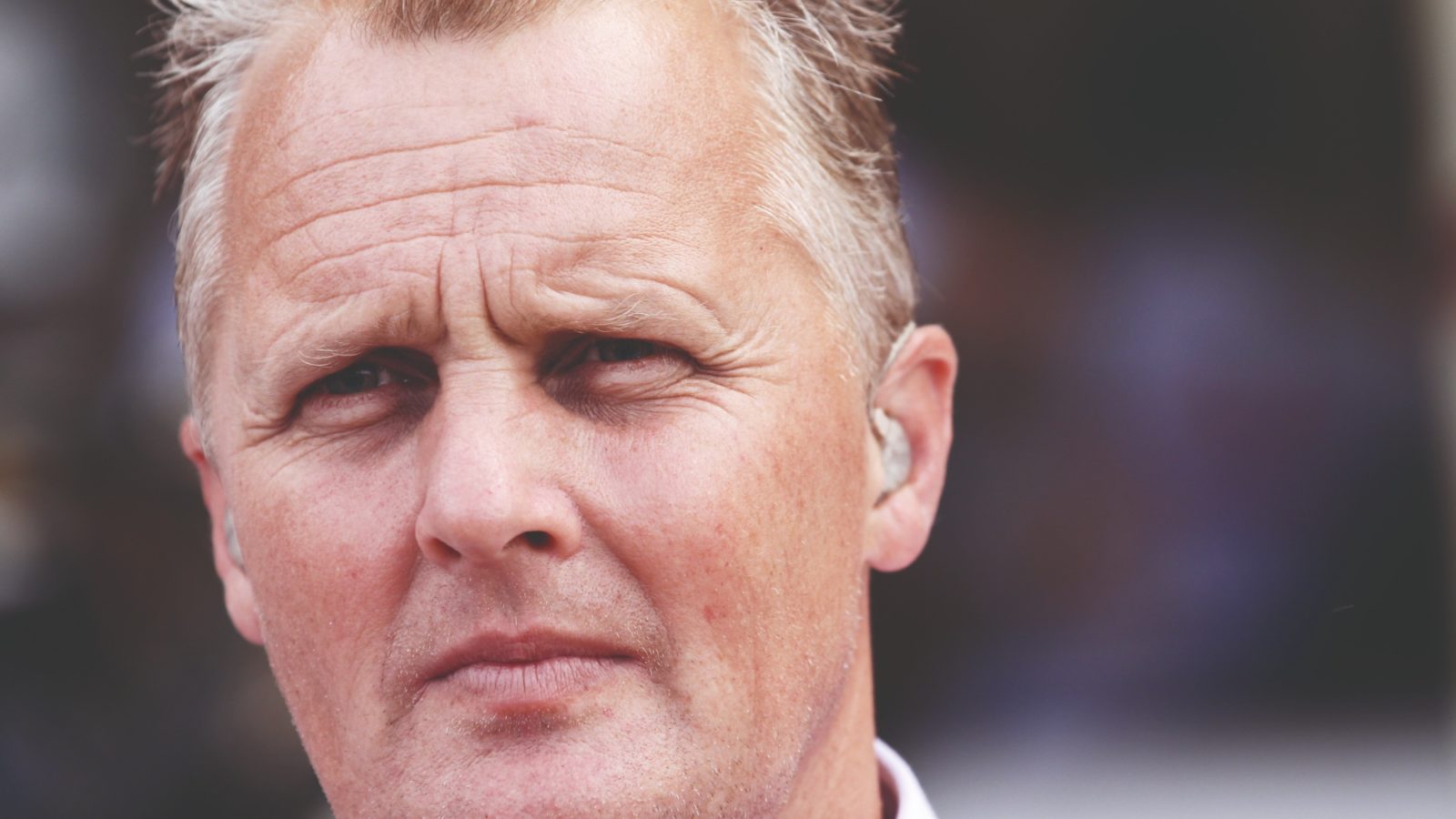Johnny Herbert: 'F1 is challenging drivers again in 2022'
“When I first got into an F1 car I expected it to be the most difficult thing I’d raced... and it was”

Getty Images
In judging the success of the new ground-effect chassis regulations, written precisely to allow drivers to follow each other closer to encourage better racing, we shouldn’t look at one race in isolation.But I’m encouraged by what we’ve seen at the first three rounds.
Initially at the first pre-season test in Barcelona not much appeared to have changed according to the drivers, but there was more positivity in Bahrain. They were saying they could follow closer, and I must say at theAustralian Grand Prix you could see that is the case. The amount of overtaking will be track specific and Albert Park has never been easy in this regard, even with three DRS zones.
Bahrain was good and Saudi Arabia wasn’t bad. Yes, the Max Verstappen and Charles Leclerc battle was a DRS game, but at least they could stay close enough to play. The drivers say it’s more fun, too.
On Sky F1 we spoke to Pat Symonds in Australia and there is still a bit of tinkering to be done, but they are monitoring what they’ve got for now. That ability to run closer will be affected by the development war between the teams and how much more downforce they can find, as Mattia Binotto has mentioned.
On the porpoising ‘bounce’ most are experiencing, the Ferrari drivers appear able to live with it, to get away with it. The Red Bull is hardly doing it at all, whereas the Mercedes is even doing it through corners. But as each gains more downforce the nature of the porpoising might change, even for Red Bull.
“With the tyres, Alex Albon tells me they are hard to ‘switch on’”
Had the teams thought about porpoising during the design process? I wonder. The majority of people at Mercedes haven’t experienced ground effects, and probably most haven’t worked on a sports car where it’s often a problem. When I drove the Audi R8 porpoising was a factor. It was better with the Bentley Speed 8, but it was still there.
The teams are all trying to run as low as possible, but that’s what increases the problem.The Mercedes bobbles a hell of a lot more at a higher pitch than the Ferrari, whereas the RedBull is dragging its arse, the rear end sparking.
We usually see sparks from the front end of the other cars. It’s interesting how it’s mixed up and it’s a tough engineering challenge that will evolve over the next three to four races.
I think it’s significant that Adrian Newey has previous experience of ground-effects, from his first F1 job at Fittipaldi way back in 1980, through his Indycars and the first racing car he designed, the March 82G GTP sports car for IMSA. He learnt a hell of a lot from that project and that experience is, I believe, playing an important role for him today.
Also, don’t forget Ferrari has Rory Byrne. He’s 78, but still works for the team. He designed ground-effect cars for Toleman in the early 1980s.
I don’t think it’s a coincidence that Red Bull andFerrari are hindered less, or at least Ferrari has control of the problem. You’d think the logical process for an F1 team would be, “We’re going into something we haven’t done before – who has direct experience of it?” In Ferrari’s case,“Ah look – our ex-chief designer…”
With the new 18-inch Pirelli tyres, Alex Albon tells me they are hard to ‘switch on’, to get them into the right temperature window.It was taking him two or three laps in Saudi Arabia and Australia, and they are edgy. But is that a bad thing? Personally, I think not. In Australia Verstappen wasn’t happy all the way through in this regard. It’s always easier when you have tyres you can just switch on, but you don’t want that if you want entertainment. I always thought it was part of the challenge.
When I first got in an F1 car I expected it to be the most powerful and difficult thing I’d ever faced – and it was. It shouldn’t be easy. The past couple of years with the brilliant hydraulic suspension systems the teams developed, everything just worked and they had complete understanding. The driver’s input was minimal, whereas now it’s bigger again because of the way the car is behaving. The feel-factor is back, and even within teams drivers are coping with it in different ways.
So in summary, yes, the new F1 is working.
I remember Australia in 1998, following Jacques Villeneuve for every lap and never being able to place the car in a position to overtake. This year the pack can run closer. The porpoising and the nature of the tyres is making it difficult, and more track-dependant, but that’s good as well. In the past we’ve gone to race one and the same pattern has been set through the season.
That’s not the case so far, especially in the midfield. We have lots to look forward to.
Johnny Herbert was a Formula 1 driver from 1989-2000 and a Le Mans winner in 1991. He is a regular contributor to Sky Sports F1.
Follow Johnny on Twitter @johnnyherbertf1
